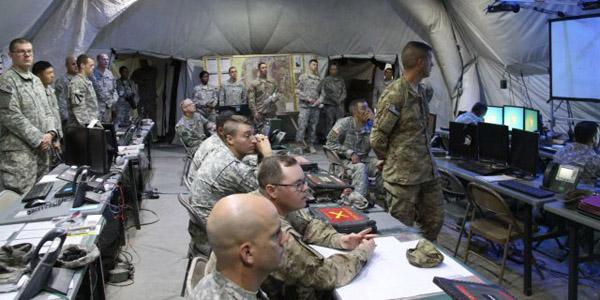U.S. Army Simplifies Systems
Beginning later this year, the U.S. Army will be updating mission command network software and hardware across 400 Army, Army Reserve and Army National Guard units. The goal is to reduce more than a dozen mission command network software and hardware versions to one standard baseline. As a result, system complexity in the command-post environment will be mitigated, allowing for easier network initialization and sustainment.
“The rapid pace of deployments in the past 15 years has led to a significant increase in the Army’s mission command systems as units have requested additional capabilities,” Col. Troy Crosby, project manager for Mission Command, says. “The Army is changing how it fields and sustains these systems, necessitating a move to a single baseline today, while we continue developing the next baseline as part of the Army’s Common Operating Environment effort.” Col. Crosby is leading the implementation of the fielding efforts.
In May 2017, the Army’s G3/5/7 issued an Army-wide directive for tactical units to consolidate to a single software baseline for mission command applications by the end of 2019. To execute the order, elements from the Program Executive Office Command, Control and Communications-Tactical (PEO C3T) are mobilized to support fielding up to 280 units within the next year. The remainder of the work, approximately 120 additional units from battalion through corps echelons, is scheduled to be complete in 2019.
The Army will employ Unit Set Fielding (USF) practices to execute the baseline reduction effort. The USF is synchronized with units' long-range training calendars, reset and support. It also is closely aligned with the Army’s Sustainable Readiness Model for building trained and ready forces.
Thane C. St. Clair, project manager, Mission Command, explains that through the USF process, capabilities are provided to a unit in a sequenced order until a complete kit is received. “Through Unit Set Fielding, we typically touch between 80 and 100 units per year. The Army is asking us to do in two years what we normally do in a five-year process [as part of technical refresh]. This is a key readiness effort, so we increased the size of our new equipment training team from 28 to 94 people to have the global reach to get the job done,” St. Clair says.
The greatest anticipated challenge with this initiative is the amount of unit training needed to familiarize signal, general-purpose users and maintainers with the upgraded capability, St. Clair states. Balancing the training need with worldwide deployments, readiness exercises, permanent change of station moves and unit rotations will be a challenge.
Currently, units stationed in the Pacific will begin to receive the equipment and training in fiscal year 2018. Units in Europe and Southwest Asia are set for work in 2019, and those within the United States are scheduled for both years. The new hardware and software that units will receive depend on the versions they were last fielded.
Today, as many as five laptop models and four versions of server stacks are in place across Army tactical units. This fielding effort will reduce the varieties of tactical laptops and servers to two baselines of common hardware. It will ultimately enable end users to manage hardware sustainment and warranties easier while reducing the hardware footprint in the command post, Army officials say.





Comments